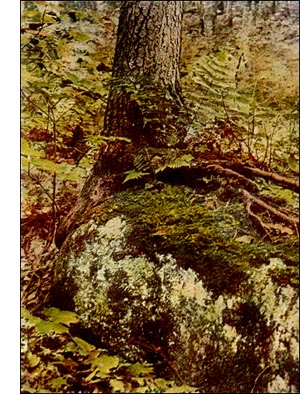Dicranella Heteromalla Moss
 Habit and habitat.-Forming silky, green tufts of moderate size on rocks, clay banks, naked soil and roots of trees.
Habit and habitat.-Forming silky, green tufts of moderate size on rocks, clay banks, naked soil and roots of trees.Name.-The specific name heteromalla is derived from the Greek; having hair only on one side, referring to the habit the leaves have of turning to one side.
Plants (gametophyte).-Stems simple or forking, 1/2 to 2 inches high.
Leaves.-Glossy, crowded, turned to one side, lance-shaped from the base; apex slender, awl-shaped, toothed or entire.
Leaves at the base of the pedicel (perichaetial leaves).-Abruptly and narrowly awl-shaped from a half-clasping base.
Habit of flowering.-Male and female flowers on separate plants (dioicous).
Veil (calyptra).-Split up one side.
Sore-ease.-Egg-shaped or oblong with the summit inclined. The base tapers to form a short neck (collum) and is slightly constricted under the mouth. Plaited when dry.
Pedicel.-Slender and pale yellow, 1/2 to 1 inch long.
Lid (operculum).-Long-beaked.
Teeth (peristome).-Showy, red, two- or three-forked to the middle.
Annulus.-Simple, very narrow.
Spores.-Mature from November to February.
Distribution.-North America, Europe and Asia.